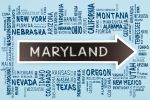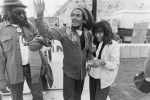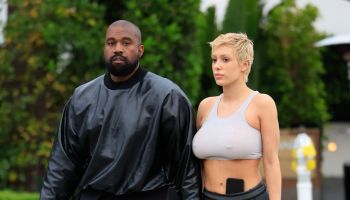VIA THE WASHINGTON POST:
For 50 years, Southwest Washington was divided in half by a mall and office complex that withered with age. Like the freeway that isolates the neighborhood from downtown, Waterside Mall left its community without a center.
Today the mall is gone, two gleaming glass office towers with a splashy ground-floor Safeway supermarket have risen in its place and the road that was mothballed to build it is back after a half-century, with wide sidewalks for pedestrians. Fourth Street may be a stretch of asphalt over two city blocks, but its reappearance in a neighborhood plagued by a generation of poor urban design is an important milestone in its revival.
The new pedestrian-friendly, mixed-use project at the Metro’s door, Waterfront, is the first of three legs of an $800 million redevelopment of 1.2 million square feet of offices, the same amount of residential space and at least 110,000 square feet devoted to shops and restaurants. A CVS and a Bank of America are moving back soon from temporary quarters. A Subway and another restaurant — one with tablecloths run by the owners of Tunnicliff’s Tavern on Capitol Hall — have signed leases. Three District government agencies moved into the office space this month.
At Sixth Street and Maine Avenue two blocks away, Arena Stage will reopen this fall after a $125 million makeover, expanding its footprint with a new playhouse, rehearsal, office and public space.
“The bottom line is that Southwest is back,” said Andrew Litsky, chairman of the Advisory Neighborhood Commission for the area and a resident since 1977. “For everyone who was complaining there was a paucity of everything, they’re wrong.”
Southwest, in the shadow of the U.S. Capitol, is a mix today of federal workers, the elderly, professionals and public housing. It was targeted by the federal government for wholesale urban renewal in the 1950s, with blocks of brick rowhouses almost entirely torn down. Thousands of residents were displaced.
New modernist architecture replaced the old, with vast stretches of concrete, high-rises, minimal stores. It was the opposite of the style favored by today’s city planners, who believe Washington should be remade into walkable neighborhoods with dense development around Metro stations and first-floor retail.
Council member Tommy Wells (D-Ward 6), who represents Southwest, calls the Metro and the waterfront “built-in amenities” that will give urgency to redevelopment as soon as financing begins flowing. A water taxi is scheduled to launch this summer, serving the waterfront in Southwest and by the Nationals’ ballpark in Southeast, he said.
Wells is pushing for a narrow road along the waterfront for pedestrians and bicyclists. “We essentially have a six-lane highway that goes through the neighborhood,” he said. “How do we make it more animated, safer, more livable and walkable to deemphasize the car?”
The current revival was a long time coming. Fannie Mae, the mortgage giant, walked out of a deal to be the anchor tenant in 2005, dashing hopes that the aging mall, empty since the Environmental Protection Agency moved out in the early 2000s, would be razed. But Forest City Enterprises found construction financing two years ago just as credit markets were freezing.
Read more here














